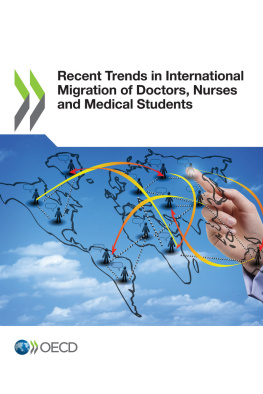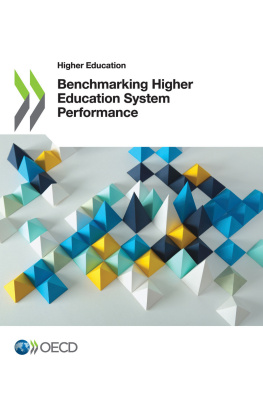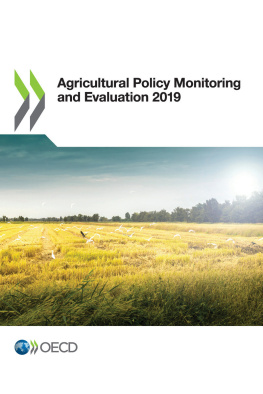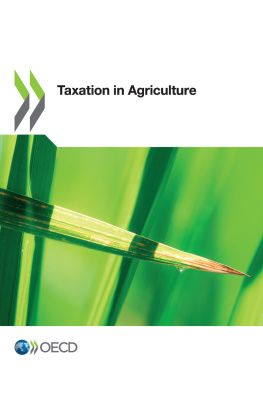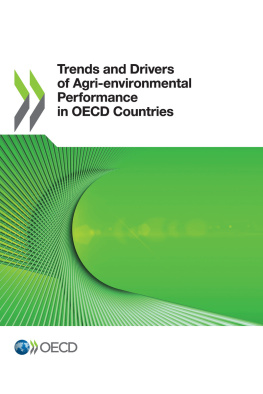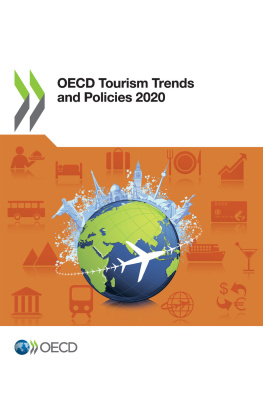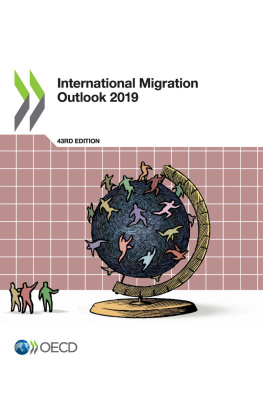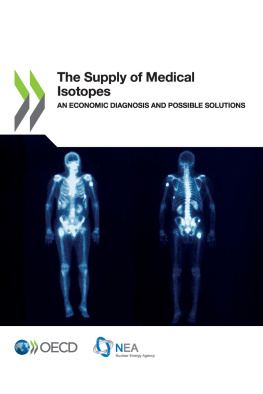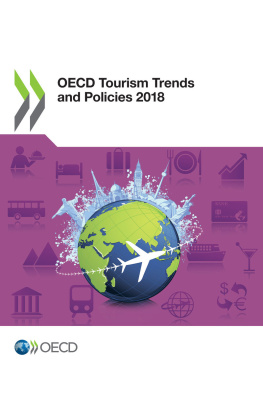OECD - Recent Trends in International Migration of Doctors, Nurses and Medical Students
Here you can read online OECD - Recent Trends in International Migration of Doctors, Nurses and Medical Students full text of the book (entire story) in english for free. Download pdf and epub, get meaning, cover and reviews about this ebook. year: 2019, publisher: OECD Publishing, genre: Politics. Description of the work, (preface) as well as reviews are available. Best literature library LitArk.com created for fans of good reading and offers a wide selection of genres:
Romance novel
Science fiction
Adventure
Detective
Science
History
Home and family
Prose
Art
Politics
Computer
Non-fiction
Religion
Business
Children
Humor
Choose a favorite category and find really read worthwhile books. Enjoy immersion in the world of imagination, feel the emotions of the characters or learn something new for yourself, make an fascinating discovery.
Recent Trends in International Migration of Doctors, Nurses and Medical Students: summary, description and annotation
We offer to read an annotation, description, summary or preface (depends on what the author of the book "Recent Trends in International Migration of Doctors, Nurses and Medical Students" wrote himself). If you haven't found the necessary information about the book — write in the comments, we will try to find it.
OECD: author's other books
Who wrote Recent Trends in International Migration of Doctors, Nurses and Medical Students? Find out the surname, the name of the author of the book and a list of all author's works by series.
Recent Trends in International Migration of Doctors, Nurses and Medical Students — read online for free the complete book (whole text) full work
Below is the text of the book, divided by pages. System saving the place of the last page read, allows you to conveniently read the book "Recent Trends in International Migration of Doctors, Nurses and Medical Students" online for free, without having to search again every time where you left off. Put a bookmark, and you can go to the page where you finished reading at any time.
Font size:
Interval:
Bookmark:
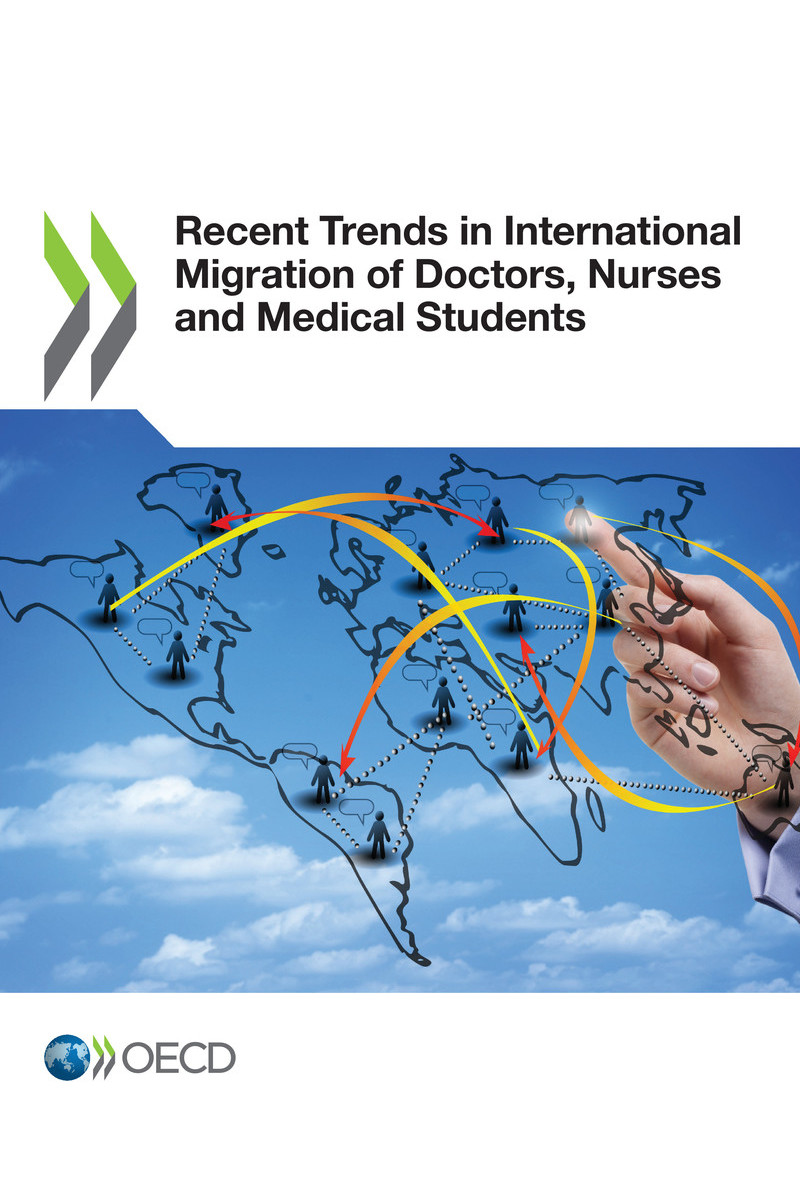
OECD (2019), Recent Trends in International Migration of Doctors, Nurses and Medical Students , OECD Publishing, Paris, https://doi.org/10.1787/5571ef48-en .
This report builds on OECD work since 2007 to monitor trends in the migration of health workers to promote more informed policy dialogues between source and destination countries of doctors, nurses and other categories of health workers. The report is divided in two parts and seven chapters.
Part 1 presents an overview of the most recent trends in the international mobility of health workers, looking at the significant contribution that foreign-born and foreign-trained doctors and nurses have made to the growing number of doctors and nurses in OECD countries between 2000 and 2015/16 (Chapter 1). It also provides a synthesis of new analysis on the internationalisation of medical education in OECD and EU countries (Chapter 2), drawing on the results from four country case studies in Europe and a study on the integration of foreign-trained doctors and nurses in Canada.
Part 2 summarises the results of each of these four case studies on the internationalisation of medical education in France (Chapter 3), Ireland (Chapter 4), Poland (Chapter 5) and Romania (Chapter 6), as well as the study on brain gain and brain waste in Canada (Chapter 7).
This report is the joint work of staff in the OECD Health Division and the OECD International Migration Division. The country case studies were prepared in collaboration with national experts and consultants. Karolina Socha-Dietrich and Gaetan Lafortune coordinated this publication and prepared the first two chapters, with the support from Erik Vickstrom (formerly from the OECD International Migration Division) for Chapter 1. Chapter 3 was prepared by Marie-Laure Delamaire (Researcher, IESEG School of Management in Paris) and Gaetan Lafortune (OECD Health Division), Chapter 4 by Mairead Heffron (researcher and consultant) and Karolina Socha-Dietrich (OECD Health Division), Chapter 5 by Anna Jaro (Researcher, Institute of Public Affairs), Agnieszka ada (Director of the European Programme, Institute of Public Affairs) and Karolina Socha-Dietrich (OECD Health Division), Chapter 6 by Marius Ungureanu (Director of Education, Department of Public Health, Babe-Bolyai University) and Karolina Socha-Dietrich (OECD Health Division), and Chapter 7 by Alexia Olaizola and Arthur Sweetman (Department of Economics, McMaster University). Galle Balestat and Eileen Rocard (OECD Health Division) provided statistical support.
Akiko Maeda (formerly from the OECD Health Division) provided an important contribution in designing the project and undertaking the first steps. Jean-Christophe Dumont (Head of the OECD International Migration Division) and Francesca Colombo (Head of OECD Health Division) provided useful comments on the first two chapters. Many useful comments on the first two chapters were also provided by national delegates during and after the OECD Health Committee meeting in December 2018.
This publication has been produced with the financial assistance of the European Union. The content of this report does not necessarily reflect the views of the European Union.
This report describes how the international migration of doctors, nurses, and medical students in OECD countries has evolved over the past decade. These recent trends are examined in the context of larger migration patterns, including the increasing mobility of students and highly skilled workers in general. This work contributes to the call for regular monitoring of migration flows in the 2010 Global Code of Practice on the International Recruitment of Health Personnel.
Foreign-born and foreign-trained doctors and nurses have contributed to growing health workforce in OECD countries
The number of doctors and nurses has increased in most OECD countries over the past decade, driven largely by growing numbers of domestic graduates, but foreign-born and foreign-trained doctors and nurses have also significantly contributed to this rise.
Among the 18 OECD countries for which data are available from 2010/11 to 2015/16, the number on foreign-born doctors rose by over 20%, a much higher growth rate than the overall increase of 10%. As a result, the proportion of foreign-born doctors across these OECD countries rose by 3 percentage points to 27% in 2016. The trend for nurses is similar, with the number of foreign-born nurses increasing by 20% while the overall increase was about 10%, so their share increased by 1.5 percentage points to 16%.
In most OECD countries, the proportion of health workers born abroad is higher than the proportion trained abroad, reflecting the fact that destination countries provide education and training to migrants who may have moved at an early age with their families or moved to pursue their university education. For example, 40% of foreign-born doctors in Australia in 2016 received their medical education in Australia.
Of all doctors working in 26 OECD countries in 2016, 16% (about 483 000) obtained at least their first medical degree in another country, up from 14.5% (about 424 000) in 2011. The share and number of foreign-trained nurses have also risen to 7% (about 546 000) of all nurses working in 25 OECD countries in 2016, up from 6.6% (about 461 000) in 2011.
The United States has traditionally attracted the largest number of foreign-trained doctors and nurses, followed by the United Kingdom. The main country of origin of foreign-trained doctors in both the United States and the United Kingdom is still India, followed by Pakistan. However, over the past decade, a growing number of new foreign-trained doctors in the United States are in fact American citizens who studied mostly in the Caribbean before coming back to the United States. These American international graduates have largely replaced the inflow of Indian graduates into the United States.
Font size:
Interval:
Bookmark:
Similar books «Recent Trends in International Migration of Doctors, Nurses and Medical Students»
Look at similar books to Recent Trends in International Migration of Doctors, Nurses and Medical Students. We have selected literature similar in name and meaning in the hope of providing readers with more options to find new, interesting, not yet read works.
Discussion, reviews of the book Recent Trends in International Migration of Doctors, Nurses and Medical Students and just readers' own opinions. Leave your comments, write what you think about the work, its meaning or the main characters. Specify what exactly you liked and what you didn't like, and why you think so.

